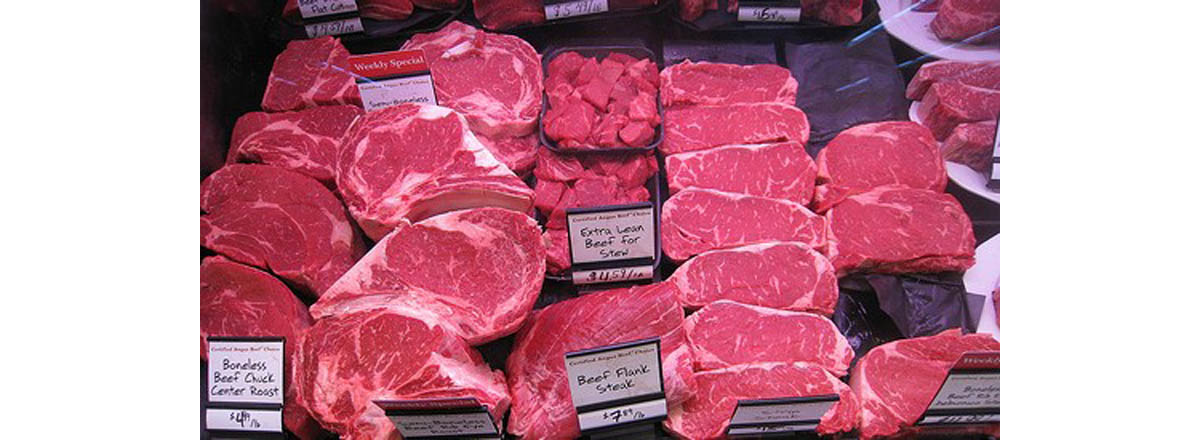Table of Contents
The news is enough to make any sensible person consider becoming a vegetarian. A recently reviewed study by the National Antimicrobial Resistance Monitoring System, a meat monitoring program set up by the US Centers for Disease Control and Prevention and the US Food and Drug Administration, found these shocking facts about the American meat supply:

- At least 39% of chicken sold in the United States in 2011 contained at least one strain of bacteria that is resistant to at least one antibiotic.
- At least 55% of the ground beef sold in the United States in 2011 contained at least one strain of bacteria that is resistant to at least one antibiotic.
Read More: US Pediatricians: Antibiotics are Over-prescribed to Children
- At least 69% of the pork chops sold in the United States in 2011 contained at least one strain of bacteria that is resistant to at least one antibiotic.
- At least 81% of the ground turkey sold in the United States in 2011 contained at least one strain of bacteria that is resistant to at least one antibiotic.
Or maybe these facts are not quite a shocking as the headlines have been telling us.
And even 61% of chicken, 45% of ground beef, 31% of pork chops, and 19% of ground turkey that don't contain antibiotic-resistant bacteria of any kind probably does contain antibiotic-treatable E. coli, Salmonella, and Campylobacter, all of which can cause serious diarrhea, vomiting, and sometimes even kidney damage and death. But that doesn't mean it's time to panic. Here's why:
- The report focused on bacteria that were resistant to at least one antibiotic. The study didn't find meat that contained bacteria that were resistant to every antibiotic. It specifically stated no samples were found that contained bacteria that were resistant to all the drugs that could treat them.
- "Antibiotic resistance" was defined as not being killed by a high dose of an antibiotic. It is possible that higher doses of the drug would have killed the bacteria in the sample.
- When antibiotic resistance is taken out of the analysis, and the question becomes the much simpler "Does this meat contain E. coli?" then the results of the study are quite different. The most frequently contaminated meat becomes chicken breast, with 83.5% of samples containing E. coli, whether antibiotic-resistant or not. E. coli typically isn't treated with antibiotics, although the most serious cases could be, since there were no strains of the bacteria detected that couldn't be treated with at least one drug.
- As poultry growers stop using antibiotics (usually because they are banned by the government), the products contaminated by antibiotic-resistant bacteria become fewer and fewer.
In fact, contamination of some kinds of meat with some kinds of antibiotic-resistant bacteria has dropped up to 90% over the last 10 years as growers stop using certain antibiotics. This suggests a series of simple steps can help you make sure your meat is safe to eat.
- Beier RC, Poole TL, Brichta-Harhay DM, Anderson RC, Bischoff KM, Hernandez CA, Bono JL, Arthur TM, Nagaraja TG, Crippen TL, Sheffield CL, Nisbet DJ. Disinfectant and antibiotic susceptibility profiles of Escherichia coli O157:H7 strains from cattle carcasses, feces, and hides and ground beef from the United States. J Food Prot. 2013 Jan
- .76(1):6-17. doi: 10.4315/0362-028X.JFP-12-253.
- Zhao S, Blickenstaff K, Bodeis-Jones S, Gaines SA, Tong E, McDermott PF. Comparison of the prevalences and antimicrobial resistances of Escherichia coli isolates from different retail meats in the United States, 2002 to 2008. Appl Environ Microbiol. 2012 Mar.78(6):1701-7. doi: 10.1128/AEM.07522-11. Epub 2012 Jan 13. PMID: 2224715.
- Photo courtesy of winnstern on Flickr: www.flickr.com/photos/winnstern/2050917990
- Photo courtesy of usdagov on Flickr: www.flickr.com/photos/usdagov/6522028931


Your thoughts on this